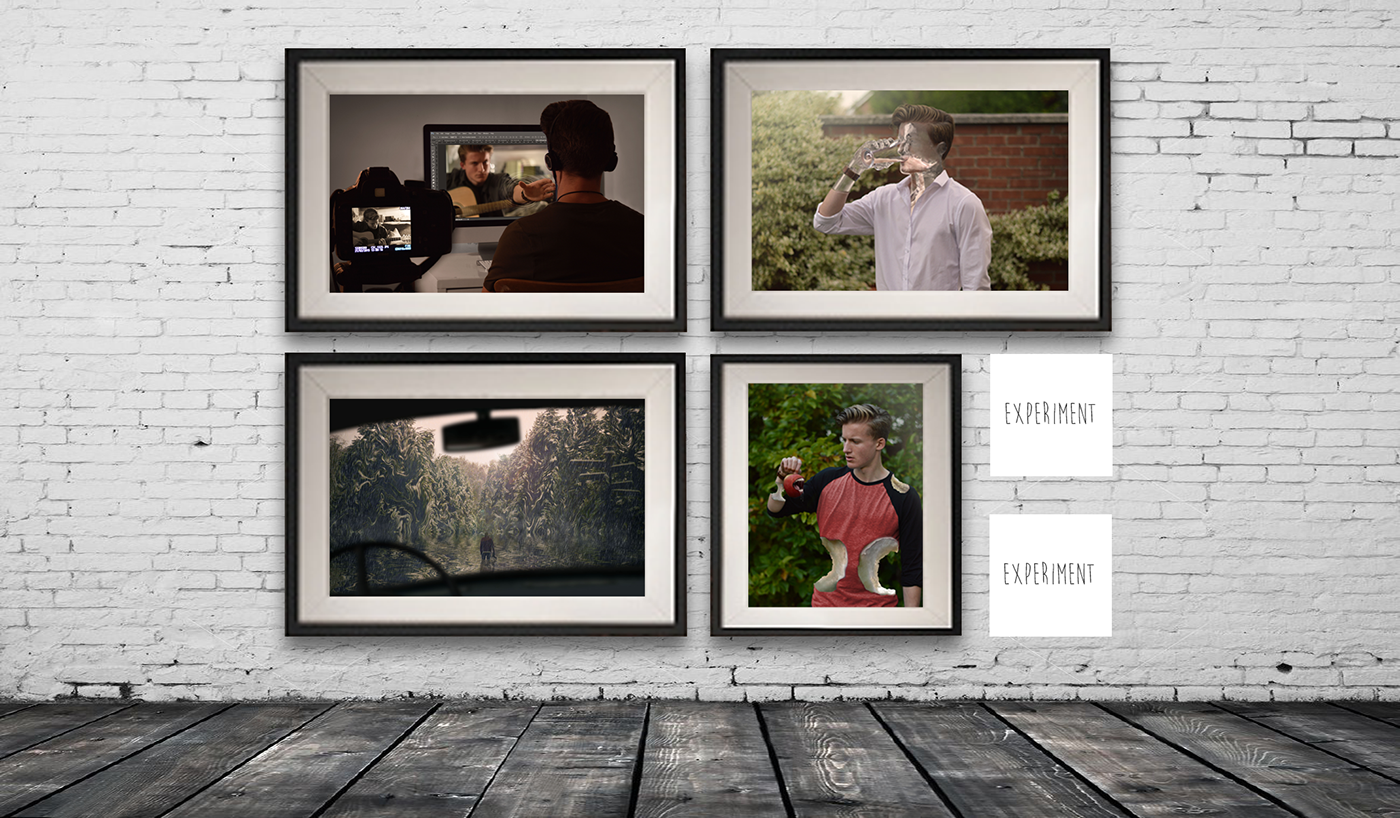Surrealistic Symbolism in the Art of Photography
What is Surrealism?
A 20th-century movement in art and literature which sought to release the creative potential of the unconscious mind, for example by the irrational juxtaposition of images.
A 20th-century movement in art and literature which sought to release the creative potential of the unconscious mind, for example by the irrational juxtaposition of images.
Statement of Intent
In this project, I will dive deep into the art of surrealism. I have always been fascinated with digital art; especially the manipulation of photographs. Everyone can dream, right? And it could be argued that the majority of what we dream is surreal; it is literally impossible to happen in the real world. Everyone has a wildly unique imagination. That’s why I love to see other artists’ uncanny visual representations of what they dream. It helps me to see things in an abnormal and constructive perspective. One of my main inspirations is Martin De Pasquale. I will also study other artists with relation to my project. These artists mostly use the same tools and foundations for their work, but in contrast are also extremely diverse, which I think will have a strong contribution to the development of my own style and understanding of surrealism. "This is the incredible world of a digital artist who creates mind-bending works of art with Photoshop. The work of Martin De Pasquale proves the programme isn't just about airbrushing curvy celebrities to make them look even more beautiful…” – The Telegraph.
Imagery that Influenced Me

Surrealism Within Advertisement
Surrealism is not just a form of art to be appreciated by the viewers, but it has many practical uses too. For example, advertisement. Not too long ago, It was quite rare for the use of surrealism to be used in advertisement. However recently, it is extremely common. Not just in the form of posters, but in TV adverts and real life point-of-sale displays etc. Below i have included two rows of photos. The top row involves extremely old, vintage surreal advertisements seen early on. The bottom row shows some modern forms of surrealism in advertisement.
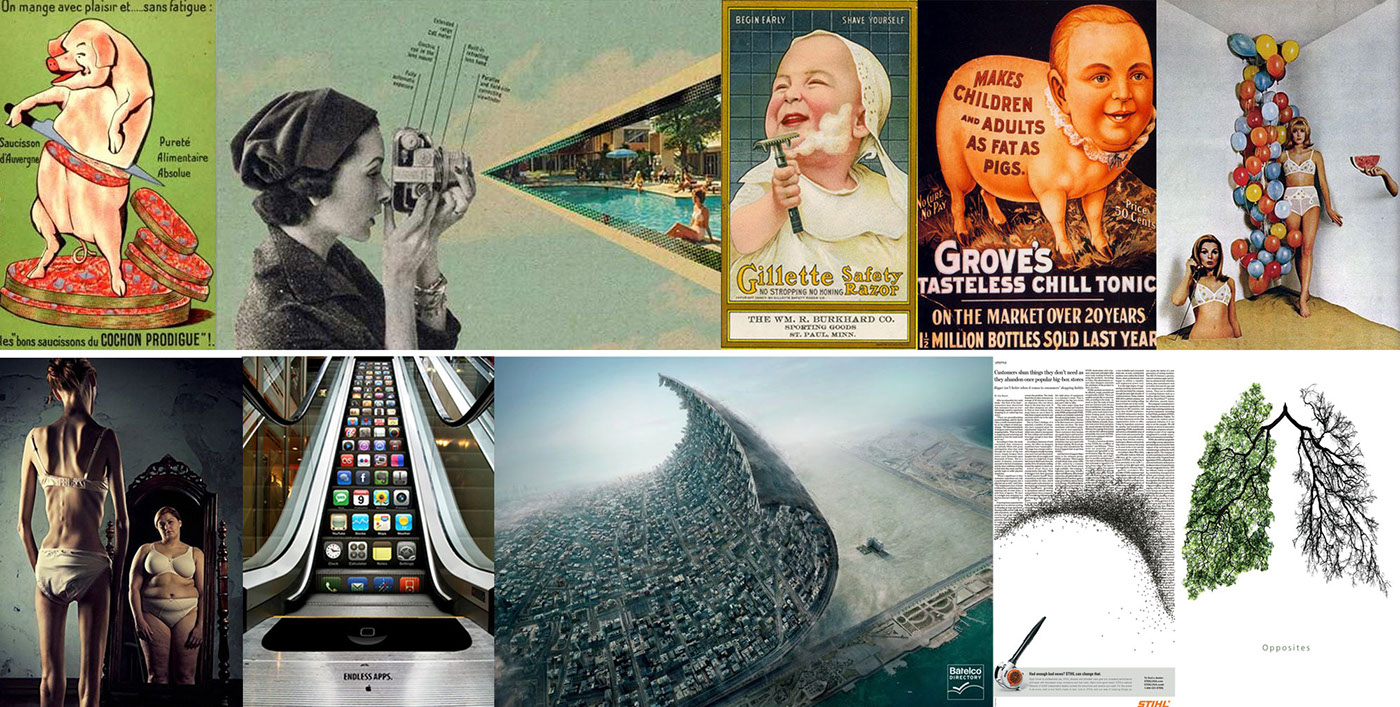
Surrealism Research / My thoughts about Surrealism
I am not sure if this is the same for you too. but doesn't surrealism make things so much easier to understand? I think that the far left photo on the row of modern surreal advertisements will help me to back-up my point. There are many things in other people's lives that we struggle to understand. We sometimes presume everyone thinks the way we do. But that would be wrong. For example, the definition of Anorexia is: "an emotional disorder characterized by an obsessive desire to lose weight by refusing to eat." We might not be able to make sense of that in our own minds. However, the artist here captured this scenario phenomenally. In the mirror is what she sees when she looks at herself. But, in reality, her true self is the figure on the left of the mirror. She is dangerously anorexic but she still somehow sees a heavily obese version of herself. I believe that this helps us to sympathise with people that have this condition. "One photo is worth a thousand words." This is extremely true, especially in this case where the image portrays such a powerful message. Surrealism has the ability to do that. It makes us think differently and see differently. It encourages creativity and gifts ideas to you, not just related to art but in everyday activities.
I also found that surreal adverts draw you in so much more than just a normal, average wordy advertisement. Maybe because we are not used to seeing these crazy things in our everyday lives? Or just because it sparks an interest in everyone. I showed quite a handful of my friends some modern surreal art and noone showed a lack of interest. They insisted on seeing more like it and were amazed. You would think that surely, people are running out of original ideas for surreal art, but they just don't!
Artist Research: Alexey Kondakov
“I thought, ‘What if I invite these [gods] into our reality and imagine they are on streets of modern Kiev?’", he says. "… My project is about life.” - It's Nice That

I chose Kondakov as one of the artists to research in this project for many reasons. Firstly, have you seen anything like this before? Most likely not. I hadn't either so when I discovered his work, I had to find out more for myself! He usn't a particularly well know artist, but he deserves to be. One common element of surrealism is unreasonable juxtaposition. This artist contrasts the old with the new but in such an uncanny fashion. He uses old paintings and picks characters in certain poses, and places them into moden scenarios where they look at home. They look like they belong there; which we know they don't. I believe that i can take away many skills and ideas from this artist and apply them to my own work in this project. For example, I could produce a piece solely focussed on juxtaposition or I could subtly add aspects to my work which don't make sense but make the viewer have to think about it.
My Response:

In my collection of samples, I adapted the style and the idea of bringing old-fashioned figures into the modern world. However, I also twisted this concept to bring modern figures of today into the world of the old. I chose what I think is a very appropriate painting to use for this twisted concept, as everyone is gathering around David Beckam, in shock and awe. Whilst one character is pointing to this strange device being held in Beckam's hand.
Artist Research: Thomas Barbèy
Before there was photoshop..

If I asked how you think this artist produces his work, you would say Photoshop... Right? Well you would be wrong.
He creates his images through a process he calls “photomixage”. His work is inspired by artists such as M.C. Escher and René Magritte as well as many years of traveling the world. His process begins with a concept, then creation and selection of negatives. Photography is a tradition in Barbèy’s family and he sometimes uses old negatives from the family archive in his work. To achieve the desired outcome, negatives are double exposed in the camera, sandwiched together to be printed simultaneously, collaged and re-photographed, and/or any combination of those processes.
He creates his images through a process he calls “photomixage”. His work is inspired by artists such as M.C. Escher and René Magritte as well as many years of traveling the world. His process begins with a concept, then creation and selection of negatives. Photography is a tradition in Barbèy’s family and he sometimes uses old negatives from the family archive in his work. To achieve the desired outcome, negatives are double exposed in the camera, sandwiched together to be printed simultaneously, collaged and re-photographed, and/or any combination of those processes.
My Response:
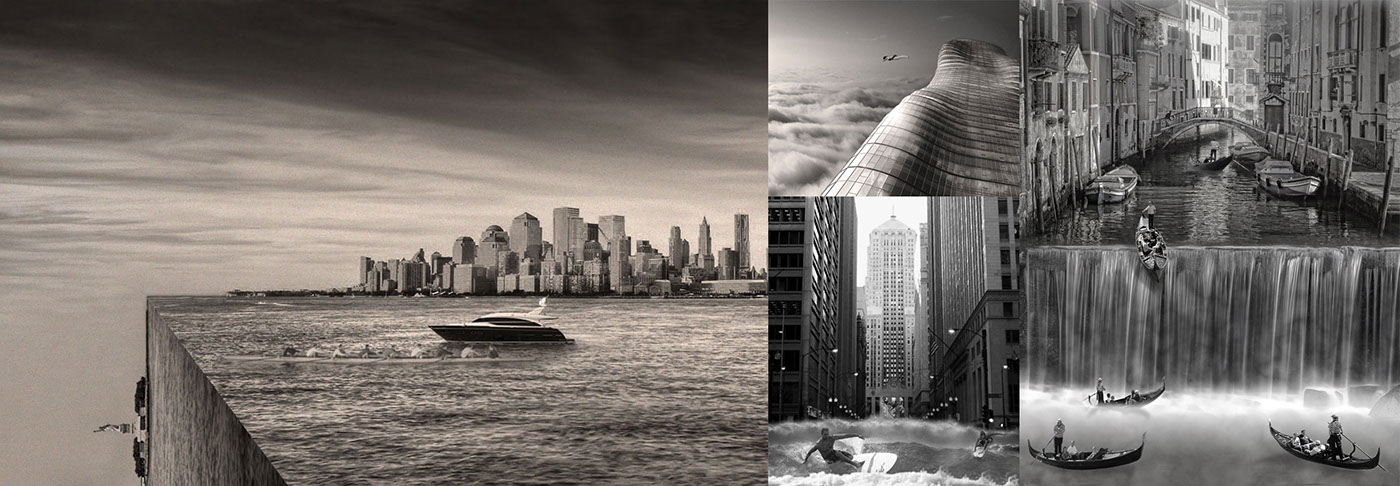
These images are my work from sampling Thomas Barbey. I have constructed these pieces by taking into consideration the style, composition and nature of his own work, and reproducing them with a modern twist.
Experimentation ~ 1

I discovered this photo and I just had to reproduce it. There are many different ways that this surrealistic photograph could be interpreted. From my experience, it's possible (and quite regular) for people to lose their identity, and who they really are. This could be due to many different events or misguided thoughts etc. They consistently experience an empty feeling in their hearts and it starts to have an extremely negative impact on their mental health. Which can lead to huge problems such as depression and anxiety etc. I think this photo represents that loss of identity and can influence the viewers to feel sympathy for the character.
Artist Research: Modifeye (Nathan Colantonio)
A quote from an interview with the artist: "Why 'Modifeye'? Modifeye is an identity that I came up with to represent my style of work. Photography is all about having "the eye" or having creative vision. I like to take photos but then modify them into something special and unique. See the world around you differently, vision what it can be and then Modifeye it."
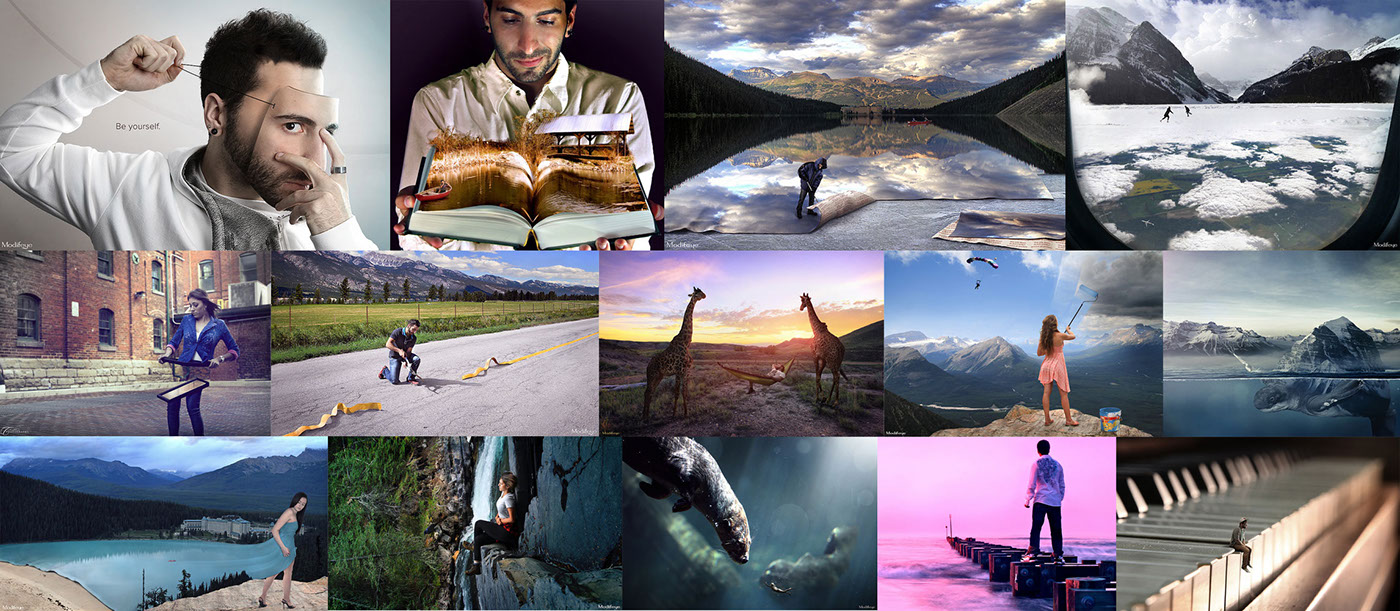
My Response:

Artist Research: Erik Johansson
"Photographer Erik Johansson creates impossible but photorealistic images that capture an idea, not a moment." - TED www.ted.com/speakers/erik_johannson
"Photographer Erik Johansson creates impossible but photorealistic images that capture an idea, not a moment." - TED www.ted.com/speakers/erik_johannson
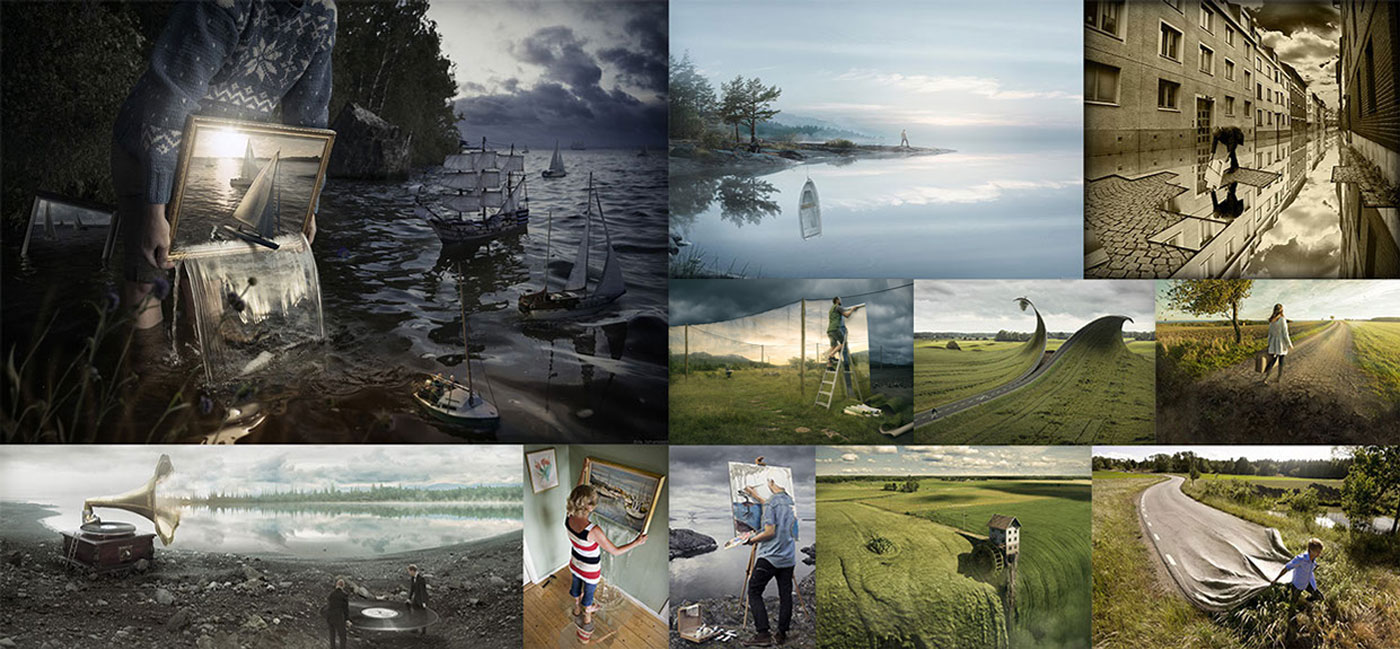
My Response:

For this response of Johansson's work, I decided to include an extra piece of detail with a little bit of a story behind it. I didn't really understand the true meaning behind the artist's original piece of work. So I felt as though I needed to provide an insight into what is happening in the photo I produced. The artist has two people, a man and a woman in his piece. I played around with this idea and incorporated it into my sample. The reflection from the water in my piece is a distant memory that the wanderer holds dear to himself, when he was in harmony with his wife. But what is above the water remains only half of the couple and a place where scenery has been lost. He re-visits this special place every year on her birthday to remember her. The viewers have an opportunity to make up their own stories about what happened to the wife, whether it be happy or sad.
Quotes:
"For me photography is just a way to collect material to realize the ideas in my mind. I get inspired by things around me in my daily life and all kinds of things I see. Every new project is a new challenge and my goal is to realize them as realistic as possible."
"I don’t capture moments, I capture ideas."
"The only thing that limits us is our imagination."
Can you tell us a bit about the production process? - Independent
"I have been doing the photography all my life but I’ve only been doing the manipulations for about four or five years.
What takes most time in the production process is the planning. With good planning the other steps don’t take so long.
If I have a good idea I will add it to my list of projects that I want to realise. The photography, for me, is a way to get material because my work is created on a computer afterwards. From the idea to the final image, it can take between a week and a month."
Why do people respond so positively to your work? - Independent
"I think it’s because the realisation is so realistic. Some of the ideas are quite abstract but when you first look at it, it appears realistic which creates the surprise. Plus, I think the images are somehow different from other kinds of art."
Artist 3: Alexey Kondakov
Experimentation ~ 2

This photo comparison shows the original photo on the left, and the manipulated photo on the right hand side. This piece may not seem that surreal at all in comparison with the artists that I have researched so far or the themes that i have looked into. However, I designed this piece with the intention to spark an understanding of surrealism for you if you do not quite understand it from my project so far. The photo on the right is likely to be what you see on social media. If you say this photo before seeing the people in real life, how would you react? Would you even recognise them? It has become normal for people to overly edit their own photos before publishing them for friends and family to see. Wether this is because they are self-consciouss or embarassed, some people are not how they appear on photos. In this photo, I edited the facial features such as hair and ear shape, body size, colours of clothes or other accessories in the photo etc. Which from my experience is what people tend to edit the most. In summary, this photo is not meant to scare you into thinking that everyone you see online is fake, because that is not true. I just wanted to emphasise the fact that the possibilities to change the appearance of someone by an incredible amount is more than possible, but is real today.
Artist Research: Martin De Pasquale ( a.k.a Photoshop Wizard )
"This is the incredible world of a digital artist who creates mind-bending works of art with Photoshop. The work of Martin De Pasquale proves the programme isn't just about airbrushing curvy celebrities to make them look even more beautiful. The Buenos Aires-based artist places himself in darkly surreal and quirky scenarios after taking nondescript photos of himself." - The Telegraph
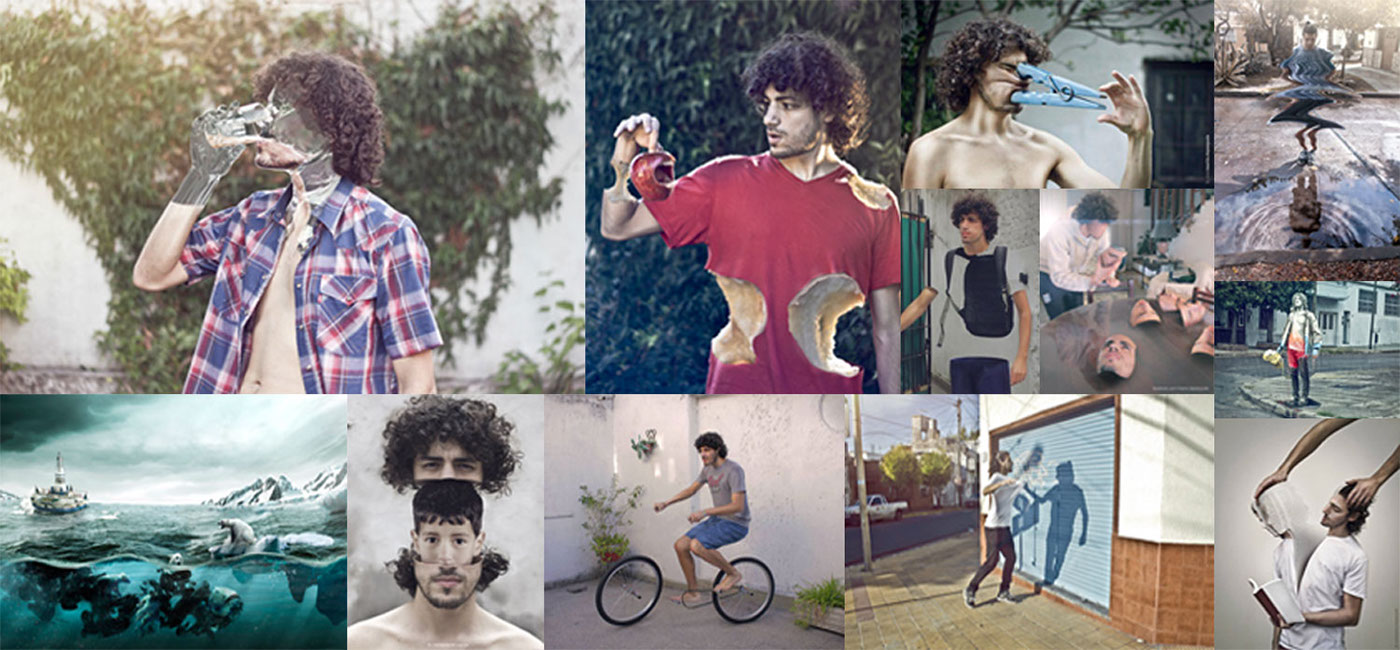
My Response:
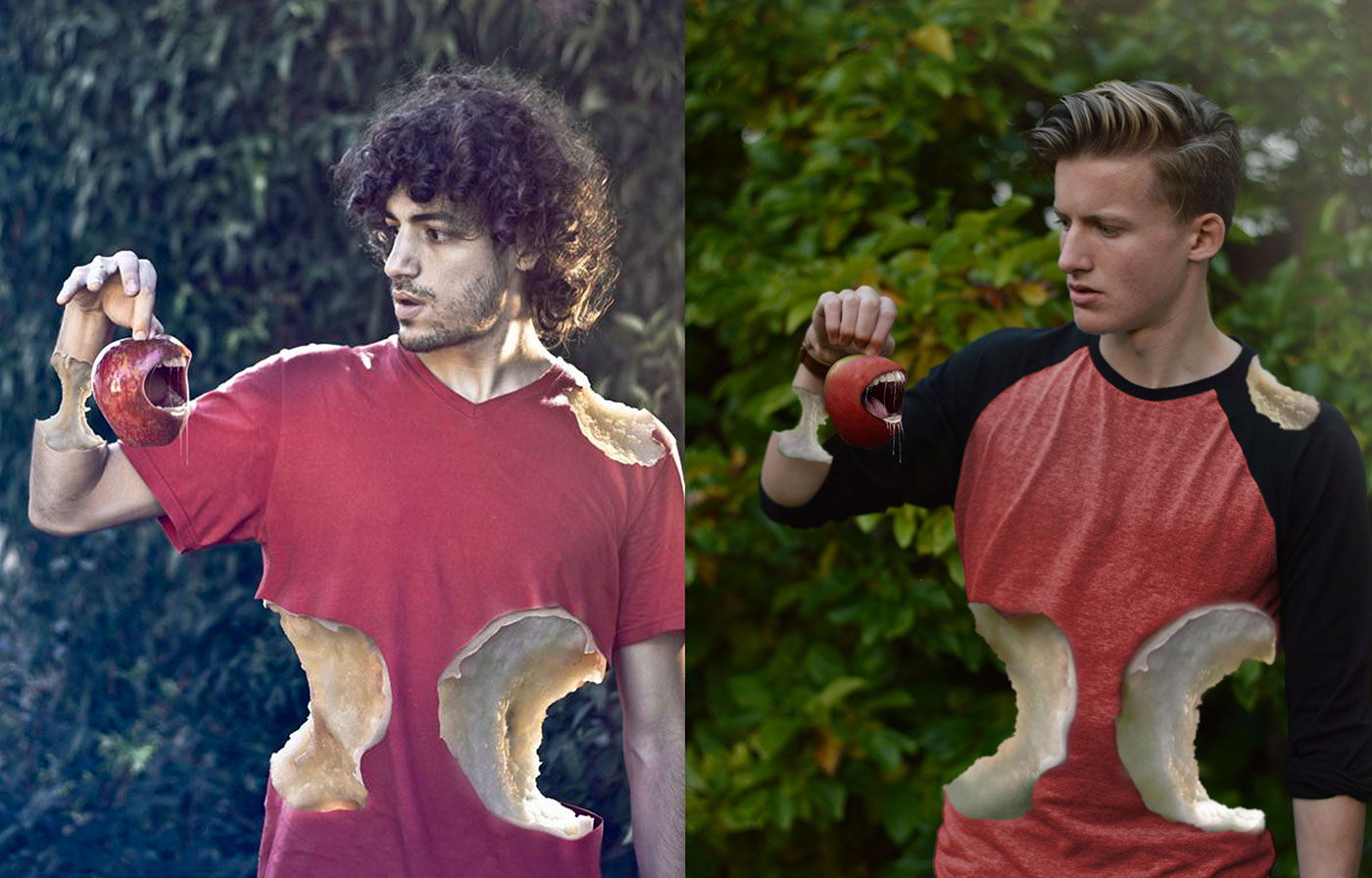

Final Piece/s

GIF Process:

Context:
In the rare occassion of it snowing in my area, I knew that the snow wouldn't survive very long before melting. So, I decided to explore my local park and seize the opportunity to capture the moment. However, there was a slight problem. It only started snowing late at night and by the time i discovered this location. It was nearly pitch black outside with minimal visibility. However, that problem wasn't too big to overcome. In the "GIF Process" above, you can see that I managed to restore and brighten the photo so i was then able to produce the edit.
By now, I have no doubt that you will have heard about "Global Warming". From my experience, a lot of people do not believe it and think it is just a theory or a conspiracy. But other people dedicate their lives to "save the planet" and campaign against certain things that they believe contribute towards it. Whether the viewers of this piece believe it or not, I have intentions to help them visualise what their world could turn into (in an extreme scenario of course). That's where the surrealism comes into. I tried to make this piece uncanny in the way that they can relate to the snow melting, but not the trees too. In this piece, I did something to make this photo more personal and relatable, to help the viewers put themselves in this photo and sympathise with the model standing in the photo. I framed the photo with a blurred out interior of a car; that is being englufed in the flood. Thus, issuing a measure of panic and urgency to help the person being surrounded with water. The viewer can put themselves in this situation or someones close to them which may help them to realise how devastating the effects of global warming are.
In the rare occassion of it snowing in my area, I knew that the snow wouldn't survive very long before melting. So, I decided to explore my local park and seize the opportunity to capture the moment. However, there was a slight problem. It only started snowing late at night and by the time i discovered this location. It was nearly pitch black outside with minimal visibility. However, that problem wasn't too big to overcome. In the "GIF Process" above, you can see that I managed to restore and brighten the photo so i was then able to produce the edit.
By now, I have no doubt that you will have heard about "Global Warming". From my experience, a lot of people do not believe it and think it is just a theory or a conspiracy. But other people dedicate their lives to "save the planet" and campaign against certain things that they believe contribute towards it. Whether the viewers of this piece believe it or not, I have intentions to help them visualise what their world could turn into (in an extreme scenario of course). That's where the surrealism comes into. I tried to make this piece uncanny in the way that they can relate to the snow melting, but not the trees too. In this piece, I did something to make this photo more personal and relatable, to help the viewers put themselves in this photo and sympathise with the model standing in the photo. I framed the photo with a blurred out interior of a car; that is being englufed in the flood. Thus, issuing a measure of panic and urgency to help the person being surrounded with water. The viewer can put themselves in this situation or someones close to them which may help them to realise how devastating the effects of global warming are.

Context:
It has become way too easy for people to mislead others with the use of today's technology. A mutual friend on social media that you just met online could look like a completely different person in real life. "Photographs" in news articles could have been heavily manipulated with software such as Adobe Photoshop to flip around the story completely. Trust has been fatigued. And it's not exactly rocket science to be able to develop the skills to twist photos. Especially with the extensive availability of tutorials online (like on YouTube for example).
I designed this piece to help the viewers visualise how someone can feel when they look back on their own photos. I know people that have been victims of this, and I myself can also relate to them. There are several factors that make people feel this way such as self-consciousness, lack of confidence, depression, anxiety etc. the list is endless.
The first thing they see in a photo of themself is 1000 flaws. They won't let anyone else see the photo until they've 'fixed' all of the flaws. When in reality, other people wouldn't even be able to recognise these flaws. They spend so long doing this that the photo starts screaming at them, putting them down and filling their thoughts up with nothing but bad things; leaving no room for happiness. This can make them feel strangled and empty...
It has become way too easy for people to mislead others with the use of today's technology. A mutual friend on social media that you just met online could look like a completely different person in real life. "Photographs" in news articles could have been heavily manipulated with software such as Adobe Photoshop to flip around the story completely. Trust has been fatigued. And it's not exactly rocket science to be able to develop the skills to twist photos. Especially with the extensive availability of tutorials online (like on YouTube for example).
I designed this piece to help the viewers visualise how someone can feel when they look back on their own photos. I know people that have been victims of this, and I myself can also relate to them. There are several factors that make people feel this way such as self-consciousness, lack of confidence, depression, anxiety etc. the list is endless.
The first thing they see in a photo of themself is 1000 flaws. They won't let anyone else see the photo until they've 'fixed' all of the flaws. When in reality, other people wouldn't even be able to recognise these flaws. They spend so long doing this that the photo starts screaming at them, putting them down and filling their thoughts up with nothing but bad things; leaving no room for happiness. This can make them feel strangled and empty...
Presentation
